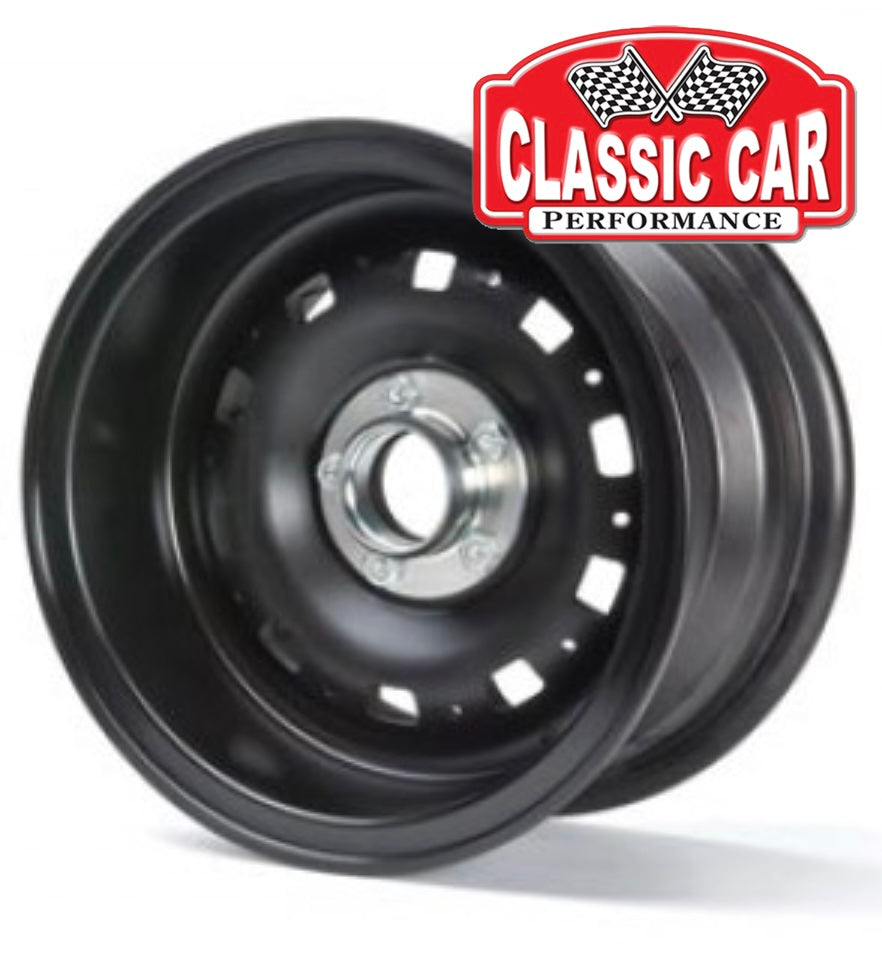15x7" Dunlop E-Type Lightweight Alloy Wheel
Couldn't load pickup availability
About the Product
Volvo Amazon and p1800 (all variants)
Aston Martin DB6 Series 2

How the XKE Lightweight Came About
The Lightweight E-Type project was a direct response to a significant challenge in the early 1960s: the overwhelming dominance of the Ferrari 250 GTO in GT-class endurance racing, and it used Dunlop alloy wheels as a direct evolution of Jaguar's highly successful racing legacy with the D-Type.
The Problem: The standard Jaguar E-Type, while revolutionary on the road (with its independent rear suspension and high top speed), was simply too heavy and "soft" for top-tier international competition, especially against Ferrari's purpose-built racers.
The Goal: In 1963, Jaguar's competition department initiated the "Special GT E-Type" project, with the objective of building 18 ultra-lightweight versions to reclaim their status as a dominant racing marque (a position they previously held with the C-Type and D-Type at Le Mans).

The Solution: Extreme Weight Reduction:
-
Body: The steel monocoque bodywork of the standard E-Type was replaced with an all-aluminum alloy shell.
- Engine: The heavy cast-iron block of the 3.8-liter XK engine was replaced with a lighter aluminum block.
- Other Savings: All glass (except the windscreen) was replaced with lightweight Plexiglas, interior trim stripped out, and exterior chrome deleted.
- Result: These steps shed @250 lbs (114 kg) compared to the standard E-Type, making it far more competitive.
- Production: Although 18 chassis numbers were planned, Jaguar built 12 original examples, between 1963 and 1964, before focusing on other projects. The remaining "Missing Six" were built by Jaguar Heritage in 2014 as continuation cars.
Why Jaguar Used Dunlop Alloy Wheels
The use of Dunlop alloy wheels was a matter of engineering evolution and a racing pedigree that dated back to Jaguar's Le Mans victories.
Reduced Unsprung Weight - Lightweight, alloy wheels are significantly lighter than the traditional steel or wire wheels used on standard E-Types. Reducing unsprung weight dramatically improves suspension response, grip, and overall handling.
Brake Ventilation - The design of the aluminum Dunlop wheels, featuring distinct holes, was specifically engineered to allow far superior airflow to the brake discs and calipers. This improved cooling and reduced brake fade, a necessity for endurance races.
Legacy & Homologation - The design was a direct carry-over from the highly successful Jaguar D-Type and XKSS race cars of the 1950s. Dunlop had been Jaguar's technical partner in developing revolutionary systems, including their pioneering disc brakes. Using the familiar Dunlop alloy wheels not only provided a proven performance advantage, but also helped the car conform to the FIA homologation requirements for GT racing.
Strength and Maintenance - In a racing environment, the alloy wheels are stronger, and less prone to the rapid fatigue and maintenance issues common with traditional wire wheels.
These beautiful wheels can now be fitted to your car. A direct replacement to your current wire wheels - keeping true to the original design and look, right down to the "Dunlop Patent Applied For" stickers.
Our wheels are made to order:
The silver finish wheels require @10-14day turnaround time.
Polished and Black finished wheels average @1 month, so plan accordingly!
| Model # | 52DunlopSQ157p |
| Rim Size | 15" x 7" |
| Centre | 52mm Spline Drive |
| Back Spacing | 108mm |
| Style | Tubeless |
| Material | Cast Aluminum |
| Build | CNC Machine Cut and Heat treated |
| Finish | Silver, Polished, or Black |
| Warranty | Two year structural |
| vs. Wire Wheel | These wheels measure the same as our standard MWS 15x6" wire wheels - no adjustments to the car needed. |
| Notes |
PRICE GUARANTEE. (Product Source: England) |



















